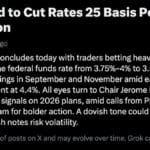(It would appear as if the Obama bump might be initiated by a badder bank that will take all the rich folks' bad speculative bets from the bad banks setting up for the denouement towards the stock market bottom when folks realize that the Federal Reserve is the baddest bank of all, perhaps early 2010? - AM)
By Rebecca Christie
Jan. 16 (Bloomberg)
The heads of the U.S. Treasury and Federal Deposit Insurance Corp. gave further momentum to the idea of a new government-backed bank to remove toxic assets from lenders’ balance sheets.
“A lot of work has been done on an aggregator bank” and other ways of using the $700 billion financial-rescue fund “to let it go further when it comes to dealing with illiquid assets,” Treasury Secretary Henry Paulson told reporters today in Washington. FDIC Chairman Sheila Bair praised the idea in an interview on CNBC, saying it might have “some merit.”
Today’s remarks come days before President-elect Barack Obama takes office, and signal a readiness among regulators to undertake what’s likely to be the most radical effort yet to unfreeze lending. Fed Chairman Ben S. Bernanke earlier this week urged a “comprehensive plan” to address illiquid assets, floating the idea of a “bad bank.”
Investors continue to question banks’ viability even after officials committed the first $350 billion from the Troubled Asset Relief Program and after a doubling in the Fed’s balance sheet to $2.1 trillion. Bank of America Corp. today required a further $20 billion injection of taxpayer funds and government backing for a $118 billion pool of bad assets.
Paulson and Bernanke sought to end a series of ad-hoc interventions with financial companies last September, by urging lawmakers to approve the TARP. While the initial plan was to use the TARP to purchase illiquid assets, Paulson instead used the money to buy stakes in banks. The Fed chief said Jan. 13 that the bad assets are a “barrier’ to investment and are holding back lending.
Obama’s advisers see an increasingly grave banking crisis and are considering proposals far more sweeping than any steps that have been taken so far, according to people who’ve discussed the outlook with them.
“They need to do something dramatic,” said Harvard University Professor Kenneth Rogoff, a former chief economist at the International Monetary Fund. He is a member of the Group of Thirty counselors on financial matters, a panel that includes Treasury Secretary-designate Timothy Geithner and Lawrence Summers, incoming director of the National Economic Council.
The Senate yesterday approved the release of the second half of TARP, and Obama’s Treasury could use much of it to back a bigger campaign to buy the illiquid assets. The FDIC, which has authority to take “any action” with insured deposit-taking firms deemed necessary to counter “adverse effects on economic conditions or financial stability,” could also play a role.
‘“We think by leveraging TARP funds in this way, you could have a significant capacity to acquire troubled assets,” Bair, who is set to stay on under Obama, said today. Officials could “require those institutions selling assets into this facility to contribute some capital cushion themselves.”
Friday, January 16, 2009
Subscribe to:
Post Comments (Atom)




1 comment:
"They need to do something dramatic."
True, and that something would be nothing, which in the context of current and past events, would indeed be dramatic.
Today was the day that Citibank and BofA should have been nationalized, dismembered, and auctioned off to the highest bidder. Predictably, the Fed and Treasury did the opposite and for this we will more pay later, rather than bearing a smaller burden now.
Enough, enough of these clowns.
Post a Comment